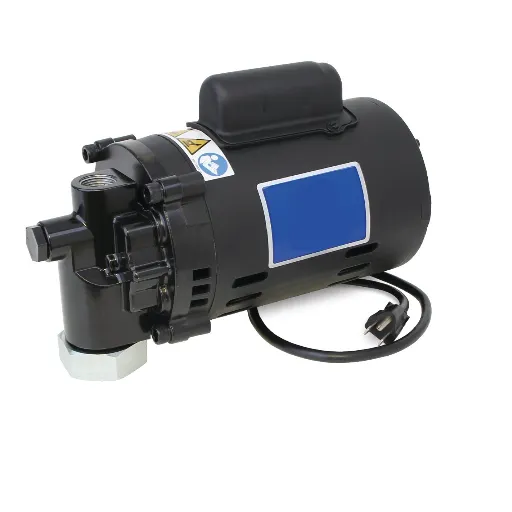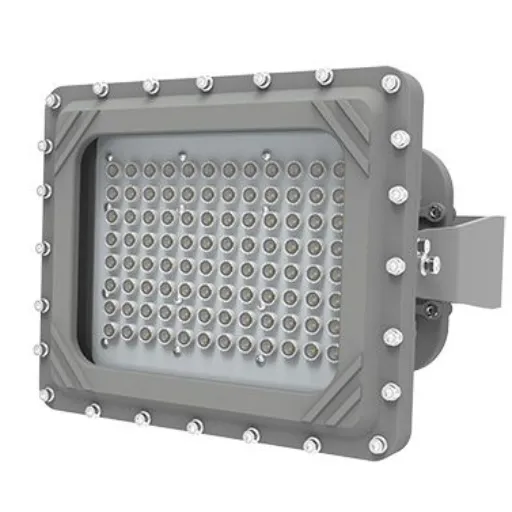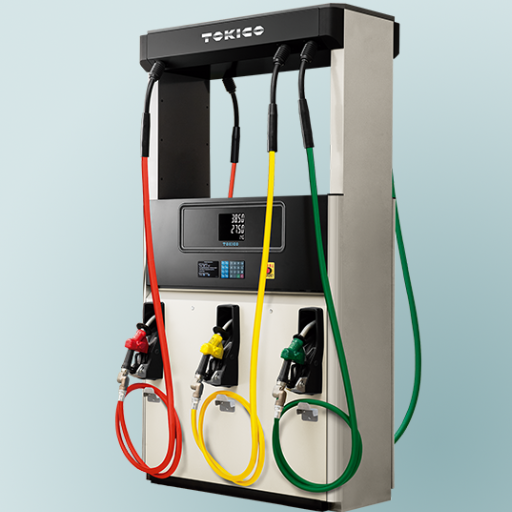Lots of them are intangible to feel the right fuel transfer pump. Depending on your needs, for example, working in a construction area, farming, or just fueling things efficiently, understanding what a transfer pump is and realizing the proper transfer pump for your purpose is crucial for safety, reliability, and high performance. This guide provides a clear understanding of what a transfer pump is and its essential role as a necessary tool with applications in various industries. You will learn about the key factors to consider when selecting the ideal fuel transfer pump for your specific application. So, stick with us to get some handy tips and professional knowledge that will make the actual selection quick and easy.
Understanding Transfer Pumps
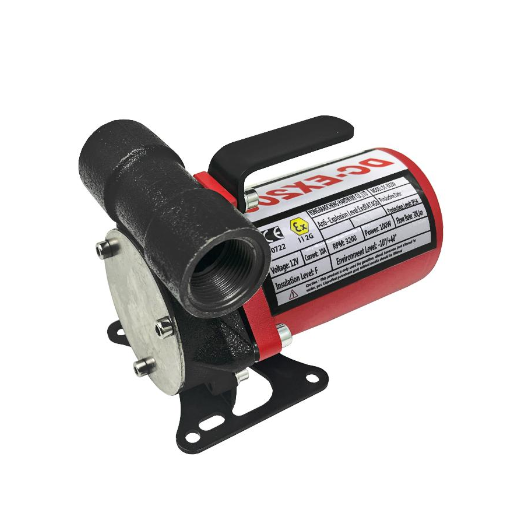
Transfer pumps efficiently move liquids from one place to another. They usually transfer fuel, water, chemicals, or other fluids, depending on the industry. These systems work by ejecting a flow that moves wetting liquid from the source container into another container. This application saves time, reduces manual labor, and facilitates the easy handling of liquids accurately and safely. Selecting the appropriate pump, whether electric, manual, or engine-driven, will enhance operational efficiency and reliability in various applications.
Definition of a Transfer Pump
A transfer pump is typically defined as a device used to move liquids efficiently and reliably from one location to another. Transfer pumps find applications in various industries, including agriculture, construction, manufacturing, and general household use, for tasks such as draining, refueling, or redistributing liquids.
How Transfer Pumps Operate
Transfer pumps operate by creating a pressure difference between the two ends, allowing the fluid to flow from its source to the discharge point. The source of power can be electricity, a gasoline engine, or a manual hand crank, depending on the purpose and environmental conditions at which it is to be used.
An electric transfer pump is often appreciated for its ease and accuracy when pumping water from tanks or diesel fuel, whereas an engine-driven pump is typically used in areas far from any electrical sources.
Key Performance Specifications
- Flow rate – Determines how much liquid can be moved per hour
- Pressure rating – Indicates the pump’s ability to overcome resistance
- Horsepower – Relates directly to the pump’s performance capabilities
- Self-priming capability – Eliminates the need for manual priming
- Corrosion resistance – Ensures longevity in harsh environments
Industry Growth: Industry data suggest the ever-increasing relevance of transfer pumps in the worldwide markets, especially in agriculture for irrigation activities and fuel management for accurate liquid handling. This, in turn, implies that they are pillars to ensure maximized productivity and a smooth working environment in various industries themselves.
How Transfer Pumps Work
Transfer pumps operate by fluid principles, converting mechanical or electrical energy to induce the transfer of liquids or gases promptly. At the most basic level, these pumps utilize impellers, diaphragms, or other similar mechanisms to create an area of low pressure, causing the fluid to flow into the pump chamber and then out through the discharge valve.
Being a state-of-the-art setup, transfer pumps are designed to be quite flexible and capable of handling virtually any type of liquid, from water to oil and chemical solutions.
Centrifugal Transfer Pumps
Utilize rapid rotations to generate centrifugal force, enabling them to move fluid effectively, making them suitable for applications involving high volumes and low viscosities.
Positive Displacement Pumps
Typically of the gear or diaphragm type, offer excellent handling of thick or sensitive liquids, providing high control and a uniform flow rate.
Modern Technology Integration
- Variable-speed motors – Allow operators to adjust flow rates to meet real-time demands
- Smart sensors – Track parameters like fluid pressure, temperature, and viscosity
- Efficiency optimization – Enable efficiency-based operational decisions
Market Projection: According to recent statistics, driven by rising usage in chemical processing, construction, and water management, the global market for transfer pumps is projected to grow at a CAGR of approximately 6.5% between 2023 and 2030—an excellent illustration of the increasing sophistication and indispensability of transfer pumps for handling complex fluid transfer demands.
Types of Transfer Pumps
Transfer pumps are manufactured in different types depending on the application and fluid characteristics. Common types include:
| Pump Type | Mechanism | Best Applications | Fluid Compatibility |
|---|---|---|---|
| Centrifugal Pumps | Rotary impeller creates centrifugal force | Water supply, chemical processing, irrigation systems | Low-viscosity fluids |
| Positive Displacement Pumps | Entraps fixed quantity and forces through discharge | Viscous liquids, delicate chemicals, slurries | Thick, sensitive materials |
| Submersible Pumps | Operates underwater while fully submerged | De-watering, sewage, underground water extraction | Contaminated fluids in harsh conditions |
Each pump design is suitable for handling different fluid transfer problems, from large volumes of water to sensitive and corrosive materials, which significantly impact pump efficiency and reliability in various industrial and commercial applications.
Fuel Transfer Pumps Explained
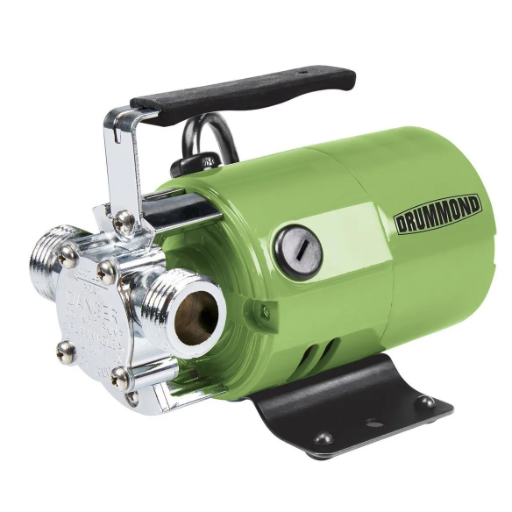
Fuel transfer pumps enable fuel to be moved from one point to another safely and efficiently. For example, fuel stored in tanks is transferred into vehicles or machines. More often than not, they find applications in the agriculture, construction, and transportation industries. Powered by manual energy or some form of energy, utilizing electric motors or engines, the pumps create flow in the working fluid. The main features of these pumps include durability, flow control, and compatibility with various fuel types, such as gasoline, diesel, or kerosene. Performing maintenance properly and adhering to the safety standards set for these pumps will keep them in optimal condition and prevent any spills or hazards.
What is a Fuel Transfer Pump?
A fuel transfer pump is a mechanism designed to move fuel from one location to another, safely and efficiently. These pumps find use across various sectors, including agricultural, automotive, construction, and marine activities, where the transfer of fuels such as gasoline, diesel, kerosene, or biodiesel is a daily consideration. They are suitable for refueling vehicles and heavy machinery, as well as for transferring fuel into storage units.
Flow Rate Specifications
The flow rate of these pumps ranges from 15 GPM to over 50 GPM, depending on the model used and the application. A more extensive setup will require pumps operating at high flow rates to meet industrial needs, where fuel transfer is time-dependent.
Power Source Options
- Manual pumps – Cost-effective for occasional use and remote locations
- Electric pumps – High efficiency and consistent performance
- Battery-operated pumps – Portable solutions for field operations
Safety and Quality Features
- Automatic shut-off nozzles – Prevent overflows and spills
- Anti-siphon systems – Additional safety against accidental discharge
- Filtration systems – Remove contaminants to ensure fuel quality
- Corrosion-resistant materials – Cast iron, stainless steel, and rugged polymers
Applications of Fuel Transfer Pumps
Fuel transfer pumps have numerous applications, enabling the efficient transfer of virtually any type of fuel from one storage form to another. Depending on the perspective one takes, these machines become absolutely imperative in areas such as agriculture, construction, transportation, and power generation.
Agriculture
Fuel transfer pumps on the farm permit direct refueling of tractors, harvesters, and other heavy equipment from onsite storage tanks. This arrangement helps to ensure seamless operations, especially during planting and harvesting periods.
Construction
At construction sites, these pumps are used to power machines such as excavators, bulldozers, and generators. This serves to decrease downtime and enhance project execution.
Transportation and Logistics
In logistics, shipping, and aviation, fleet operators rely on fuel transfer systems for bulk refueling to guarantee on-time schedules. The e-commerce boom increases demand for swift transportation solutions.
Backup Power Generation
With an increased focus on backup power amid grid uncertainty and extreme weather events, fuel transfer pumps facilitate the replenishment of diesel or gasoline generators.
Marine Applications
In the marine sector, pumps have high demand for fuel transfer. Designs require corrosion resistance due to exposure to salty and humid conditions.
Market Growth: The global fuel transfer pump market is estimated to surpass $2 billion by 2027, growing at a relatively steady CAGR, according to industry analysts. This growth is attributed to the increasing demand for fuel-efficient solutions and advancements in pump technology, including automated and energy-saving systems.
Benefits of Using a Fuel Transfer Pump
This pump boasts numerous advantages in various industries, streamlining management processes. In other words, fuel transfer pumps ensure that the precise amount of fuel needed is delivered, resulting in less fuel wastage and equipment operating at full capacity. Fuel transfer pumps today come equipped with functionalities such as automation and energy-saving features, making them highly efficient and easier to maintain.
✅ Key Advantages
- Reduce fuel loss by nearly 20% according to studies
- Minimize risk of spills and mishandling
- Improve operational efficiency
- Built-in filtration maintains clean fuel
- Enhance workplace safety
- Save costs through reduced waste
📊 Performance Benefits
- Precise fuel delivery
- Equipment operates at full capacity
- Automation capabilities
- Energy-saving features
- Low maintenance designs
- Environmental compliance
The implementation of modern fuel transfer systems allows one to improve operational efficiency while going green and gaining greater control over fuel resources-the foundation for sustainable growth and profitability in fuel-dependent industries.
Diesel Transfer Pumps Overview
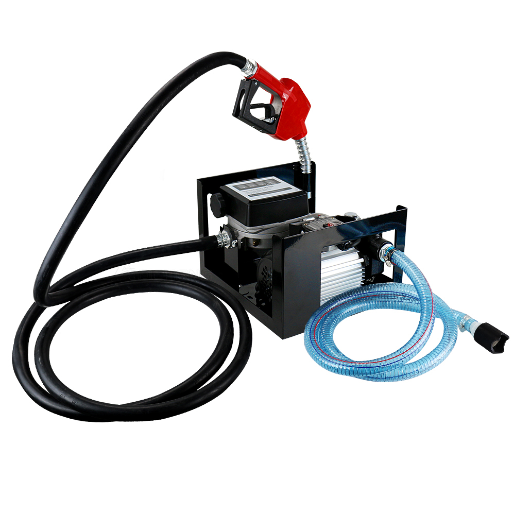
The diesel transfer pumps are an efficient tool for transferring diesel fuel from tanks to vehicles or equipment. Essentially, such pumps transfer fuel quickly, cleanly, and in the correct quantity with minimal fuel wastage. Installation of the diesel transfer pumps is found to be imperative in the farming, building, and transporting industries, needed as an urgent requirement for fuel. They vary from manual to electric and battery-powered models, depending on the operating needs and environment.
What is a Diesel Transfer Pump?
In contrast to generic pumps, a diesel transfer pump, due to its specialized characteristics, efficiently and safely transfers diesel fuel from one container to another. These pumps are necessary whenever large quantities of diesel need to be transferred quickly with minimal effort. Hence, diesel transfer pumps find wide applications in the agriculture, construction, mining, and trucking industries, where diesel powers the machines and vehicles.
Diesel-Specific Design Features
These pumps are designed to account for the viscosity of diesel fuel. This quality of theirs helps their increased durability and efficiency in such tasks compared to any other general-purpose pumps.
| Power Type | Flow Rate (GPM) | Best Use Cases | Advantages |
|---|---|---|---|
| Electric | 10-40 GPM | Heavy-duty operations | Fast transfer, consistent performance |
| Manual | 5-15 GPM | Small operations, limited power | Cost-effective, no power required |
| Battery-Operated | 8-25 GPM | Portable field operations | Mobility, moderate flow rates |
Advanced Features in Modern Diesel Transfer Pumps
- Automatic shut-off systems – Prevent overfilling
- Built-in filtration systems – Filter out particulates from the fuel system
- Flow meters (digital or mechanical) – Provide exact measurements
- Fuel management integration – Reduce wastage and extend machinery lifespan
Features of Diesel Transfer Pumps
High Flow Rate Choices
Diesel transfer pumps are designed with a wide range of flow capacities to suit various applications. Typical pumps may flow at rates of 10 to more than 25 gallons per minute, depending on the requirements for efficient fuel transfer.
Durable Construction
They are made of sturdy materials, such as cast iron, aluminum, or stainless steel, which are resistant to wear, corrosion, and other environmental hazards, ensuring longevity.
Power Source Compatibility
There are electric, manual, and battery-operated diesel transfer pumps. An electric pump may be more suitable for heavy-duty operations, whereas a battery-operated one is more portable for use at a distance.
Filters Integrated
Many of these pumps come with integrated filtration systems, cleaning out impurities and debris from diesel fuel, thereby preventing contamination and optimizing engine performance.
Automatic and Manual Nozzles
The pump may be fitted with automatic shut-off nozzles to prevent overfilling or manual nozzles, allowing for more precise control of dispensing.
Portability
Some portable types come with carry handles, mounting brackets, or are light enough to carry along for fuel transfer within the field.
Safety Features
The incorporation of advanced safety mechanisms, such as explosion-proof motors, ensures that safe operation is possible in hazardous environments, complying with ATEX standards.
Diesel transfer pumps thus become versatile and reliable tools in agriculture, construction, and transportation, where handling fuel efficiently and safely is a crucial consideration.
Using Diesel Transfer Pumps Safely
⚠️ Critical Safety Guidelines
Working safely with diesel transfer pumps prevents accidents and ensures the timely transfer of fuel. Safety tips to abide by include:
- 1Check for Compliance: Always follow the ATEX or UL certification requirements for pumps intended for use in hazardous environments. Any non-compliant equipment can offer severe hazards, including explosive possibilities.
- 2Inspect Equipment Regularly: Routinely observe and inspect the pump and its components for wear, leaks, or any form of damage if a fault is found, repair or replace the malfunctioning element immediately to prevent further malfunction during pump operations.
- 3Use in a Well-Ventilated Area: The vapors emitted during pumping are hazardous; therefore, never operate the pump in a position without ventilation. Furnished with this warning, the enclosed places are unfit for the operation.
- 4Proper Grounding: Properly ground the pump and all associated equipment so that, in the event of static electricity formation, it cannot ignite flammable vapors during fuel transfer.
- 5Avoid Overfilling: Carefully observe the fuel transfer operation to preclude the overfilling of tanks or containers. If the pump is equipped with an automatic shut-off mechanism, always engage it so that the fuel can cease to flow when it reaches its designated level.
- 6Wear Protective Gear: Always use protective equipment, such as gloves, safety glasses, or any other gear that reduces exposure to fuel and protects you from potential injury.
These practices ensure the safe and efficient use of diesel transfer pumps, while also reducing potential hazards within the working environment.
Choosing the Right Transfer Pump
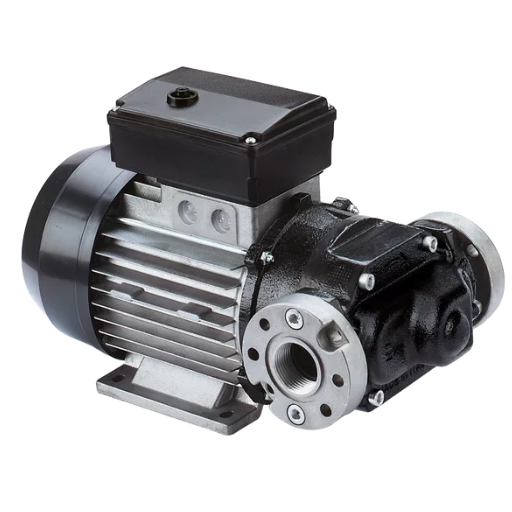
Key factors to consider while choosing the right diesel transfer pump:
Factors to Consider When Buying a Transfer Pump
Some factors to consider when ordering a transfer pump-granting amalgamation of adequate performance with safety:
Flow Rate and Efficiency
A pump should be selected with a flow rate adequate for the volume of liquid to be transferred. Pumping at higher flow rates is suitable for large-scale jobs, but operational cost engagement should be judged in terms of an energy-efficient pump.
Pump Power Source
Will an electric pump serve your purpose? Or will you prefer a manual or gas-powered one? Electric pumps are reliable and easy to set up. Manual pumps are great for on-the-go use and can function without an external power source.
Pump Construction and Material
When working with chemicals or harsh liquids, look for a pump made from a durable, corrosion-resistant material, such as stainless steel or heavy-duty plastics.
Compatibility and Installation
Confirm the compatibility of the pump with the liquids, hoses, and fittings you plan to use. Then, check for any required accessories for installation to ensure it will not cause unnecessary delays.
What to Look for When Buying a Fuel Transfer Pump
When fuel transfer pump selections are made, the following critical factors should be taken into consideration so that the choices made are best suited for any specific needs:
| Selection Criteria | Key Considerations | Impact on Performance |
|---|---|---|
| Flow Rate and Pumping Capacity | GPM requirements for your application | Determines transfer speed and efficiency |
| Power Source | Electric, battery-operated, or manual | Affects portability and operational scope |
| Fuel Compatibility | Diesel, gasoline, kerosene, biofuels | Prevents material degradation and failures |
| Durability and Build Quality | Materials like stainless steel or aluminum | Ensures longevity and weather resistance |
| Safety Features | Auto shutoff, thermal protection, spark resistance | Prevents accidents and fuel spillage |
| Ease of Use and Maintenance | Simple operation and accessible components | Reduces downtime and service costs |
Selection Checklist
- Flow Rate: Choose based on volume requirements (small applications vs. industrial use)
- Power Source: Consider availability and operational environment
- Fuel Compatibility: Ensure materials won’t degrade with specific fuels
- Build Quality: Look for weather-resistant, durable construction
- Safety Features: Prioritize automatic shutoff and thermal protection
- Maintenance: Select user-friendly designs with accessible parts
Selecting a fuel transfer pump by weighing all these factors within the framework of your operations will help you meet your operational demands more effectively and safely. Always check user reviews from trusted sources and review the manufacturer’s specifications for quality and performance.
Quality and Reliability in Transfer Pumps
When considering fuel transfer pumps, quality and reliability are the first considerations for operational efficiency and safety in harsh environments. High-grade transfer pumps are typically made from materials that resist corrosion and are sturdy, such as stainless steel and heavy-duty cast iron, which enables them to perform better and last longer. Another critical factor preventing leaks from occurring is the advanced sealing mechanism- a leak might lead to fuel loss or dangerous situations.
Performance Standards
Reliability is the focus of discussion in the context of the pump under various operating conditions. A powerful motor and steady flow rates of 15-20 gallons per minute for normal jobs can facilitate fast fuel transfer without compromising exact measurement. During production, manufacturers may perform rigorous tests to certify the product against industry standards, such as ISO 9001, thereby providing the end user with assurance of the product’s consistent performance.
Advanced Monitoring Systems
- Real-time monitoring – Track pressure, flow, and temperature changes
- Predictive maintenance – Identify problems before they arise
- Safety certifications – ATEX and UL compliance for flammable substances
- Industry applications – Agricultural, transportation, and construction industries
Investment Considerations
Investing in a reputable brand known for after-sales service is therefore of paramount importance. Full warranties, availability of replacement parts, and dedicated customer support certainly add to the overall reliability of the pump. Emphasizing these aspects will enable businesses to ensure efficiency, safety, and value for money in their fuel transfer operations.
Using a Transfer Pump Effectively
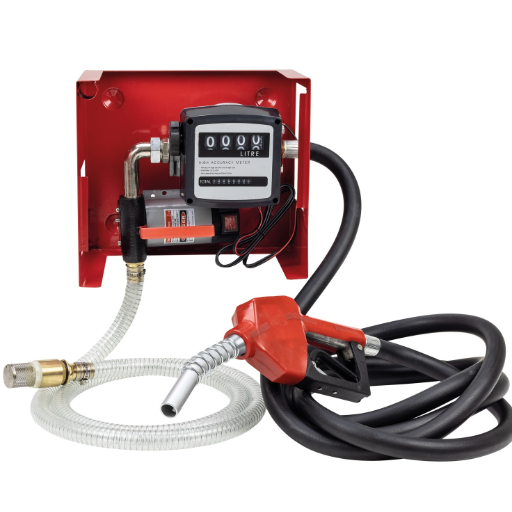
The effective use of the transfer pump depends on a thorough examination of the manufacturer’s instructions for operational procedures and safety precautions. The transfer pump must be compatible with the fuel type being transferred; all connections should also be reviewed and secured to avoid any leakages. Ensure the pump is primed if necessary. Verify that the inlet and outlet hoses are properly positioned. Maintain a steady flow during usage to prevent overfilling or spilling. After use, clean the transfer pump and hoses to avoid contamination and to extend pump life. Periodic maintenance and inspections must be carried out to ensure it continues to function correctly in the event of wear and tear.
How to Use a Transfer Pump
When using a transfer pump, I ensure all connections are tight to prevent any chance of leakage. If the transfer pump needs priming, I do so. I then make sure the inlet and outlet hoses are correctly positioned. While running the pump, ensure a steady flow to prevent spilling or overfilling. Once the job is complete, the pump and hoses are thoroughly cleaned to avoid the possibility of cross-contamination and to ensure their longevity. Regular maintenance will keep it running smoothly and help recognize any potential issues in their early stages.
Pre-Operation Checklist
- Read manufacturer’s instructions thoroughly
- Check pump compatibility with fuel type
- Inspect all connections and seals
- Prime pump if necessary
- Position inlet and outlet hoses correctly
During Operation
- Monitor flow rate consistently
- Watch for leakages or irregularities
- Prevent overfilling of tanks
- Maintain steady, controlled flow
- Keep safety equipment nearby
Post-Operation
- Clean pump and hoses thoroughly
- Check for wear or damage
- Store equipment properly
- Document usage and maintenance
- Schedule next inspection
Best Practices for Fuel Transfer
During the transfer of fuel, safety and efficiency should be emphasized to prevent hazards from developing and ensure that fuel is handled correctly. A few crisp best practices are given below, based on usual expert recommendations:
⚠️ Essential Safety Protocols
- Use the Proper Equipment: Pumps, hoses, and containers should always be used for fuel transfer purposes. Using anything else could cause leaks, spills, or equipment failure.
- Proper Ventilation: The fuel transfer operation should be conducted in an open environment to prevent the accumulation of flammable vapors.
- Ground and Bond Equipment: All equipment should be grounded and bonded during transfer to prevent a static charge that may ignite the fuel vapors.
Operational Best Practices
| Practice | Purpose | Implementation |
|---|---|---|
| Avoid Overfilling | Prevent spillage and safety hazards | Maintain close watch, use automatic shutdown nozzles |
| Wear Protective Gear | Minimize chemical exposure | Always use gloves, safety glasses, and appropriate PPE |
| Regular Equipment Inspection | Ensure safe operations | Check hoses, seals, and pumps before and after use |
| Proper Spill Response | Environmental protection | Keep spill response kits ready, follow environmental laws |
| Regulatory Compliance | Legal conformity and safety | Follow local, state, and federal guidelines |
Environmental Compliance
- Handle Spills Properly: Always keep spill response kits ready for use in case of an accident. Clean up after spills in accordance with local, state, and federal environmental laws to prevent pollution.
- Comply with Regulations: Follow local, state, and federal guidelines on fuel storage and transfer for conformity and safety.
Implementing these practices will lessen all the risks and ensure a smooth operation for fuel transfer.
Common Mistakes to Avoid
Understanding and avoiding common pitfalls is crucial for safe and efficient fuel transfer operations. Here are the most frequent mistakes and how to prevent them:
🚫 Overfilling Tanks
Risk: Overfilling tanks can cause spills and pose safety hazards.
Prevention: Be sure to watch fuel levels during transfer to prevent an overflow closely.
🚫 Using Wrong Equipment
Risk: Hoses, pumps, or containers that are not approved for fuel transfer may develop leaks or malfunction while in use.
Prevention: Always use certified equipment for fuel handling.
🚫 Neglecting Maintenance
Risk: Failing to inspect or maintain the fuel transfer equipment poses risks of failure or accidents.
Prevention: Arrange for regular inspections and attend to any wear and tear as soon as it is noticed.
🚫 Flouting Safety Precautions
Risk: Forgoing steps intended for safety, such as grounding equipment during transfer to prevent static charge build-ups, can create hazards.
Prevention: So, always follow the stipulated safety procedures to reduce risks.
🚫 Poor Spill Response Preparation
Risk: Without readily available spill kits and emergency plans, accidents can worsen.
Prevention: Ensure you have the necessary means and training to respond to an incident promptly.
⚠️ Critical Reminder
Avoiding the mistakes mentioned above is paramount to guarantee safe, efficient, and legally compliant fuel transfer operations.
Conclusion
Fuel transfer pumps are essential tools across multiple industries, from agriculture and construction to transportation and marine applications. Understanding the different types, features, and safety requirements is crucial for selecting the right pump for your specific needs. Whether you choose electric, manual, or battery-operated models, prioritizing quality, safety features, and proper maintenance will ensure reliable performance and longevity.
Key takeaways for successful fuel transfer operations include:
- Select pumps based on flow rate requirements and compatibility
- Prioritize safety features and regulatory compliance
- Implement proper maintenance and inspection schedules
- Follow best practices to prevent accidents and environmental damage
- Invest in quality equipment from reputable manufacturers
By following the guidelines and best practices outlined in this comprehensive guide, you can ensure efficient, safe, and cost-effective fuel transfer operations that meet your operational demands while maintaining the highest safety standards.
Reference Sources
1. Energy Efficiency Technologies – Air Source Heat Pump vs. Ground Source Heat Pump
2. Analysis of the Microcontroller-Based Electrocoagulator in Treating Lake Water
3. Environmental Protection in Fertilizer Plants
Frequently Asked Questions (FAQs)
What is a transfer pump, and how does it work?
A transfer pump is a device used to transfer liquids from one location to another. They can be designed to transport water, diesel fuel, or any other type of liquid efficiently. The operation of these pumps relies on creating suction, which allows the fluid to enter the pump and then be forced out through a discharge line, thereby transferring fluids from storage tanks to the vehicle or other equipment.
What types of transfer pumps are available in the market?
There are many types of transfer pumps available in the market, including electric diesel transfer pumps, manual pumps, and vane pumps. Each one is perfect for different applications, depending on the fluids to be transferred, the volume required, and the pressure requirements. For example, electric pumps are used in continuous operations, whereas manual pumps are worked by hand.
How do I choose the right transfer pump for my needs?
Choosing the proper transfer pump depends on three key criteria: the type of fluid to be transferred, the required flow rate, and whether the transfer pump is used to move water or diesel fuel from one location to another. Accordingly, consider whether the pump’s specifications allow it to be connected to a pressure gauge and whether it can handle the specific type of fluid you are working with.
Can transfer pumps be used for fuel dispensing?
Yes, the fuel transfer pumps are used for dispensing fuel. They can efficiently transfer high-quality fuel from storage tanks to vehicles or other storage tanks. Ensure that you select a fuel transfer pump that complies with safety regulations and is suitable for the type of fuel being transferred (i.e., diesel or gasoline).
What should I look for when buying a diesel transfer pump?
When purchasing a diesel transfer pump, consider the flow rate, compatibility with your fuel tank, and the ability to generate a vacuum that draws fluid with maximum efficiency. Additionally, verify that the pump has the following specific features: a tight seal to prevent leaks, a pressure gauge to monitor flow, and fittings that are compatible with your setup.
How do these pumps move water or other fluids?
Pumps move water or other fluids by raising or lowering the pressure. Several methods are used to accomplish this; they include rotary vane or diaphragm action, which causes the pump to suck in the fluid, then push it out again through discharge lines. The design of a pump determines how efficiently it operates and how much fluid it can pass.
Are there any manual pumps for liquid transfer?
Yes, manual pumps are available and can be operated by hand. They are typically used for relatively minor tasks, such as when electric power is unavailable or when handling small amounts of liquids, including water, diesel fuel, and other similar substances. They are straightforward and can actually do a good job of transferring liquids from one container to another without any electrical help.
What is the advantage of Fill-Rite?
Fill-Rite pumps are renowned for their reliability and efficiency in transferring fuel and other liquids. They carry a reputation for performance at a competitive level and have numerous practical applications, including dispensing fuels and transferring liquids from storage tanks. These pumps rank high in the durability category, are very easy to use, and have earned brand loyalty from users who require transferring fuel or other liquids.


